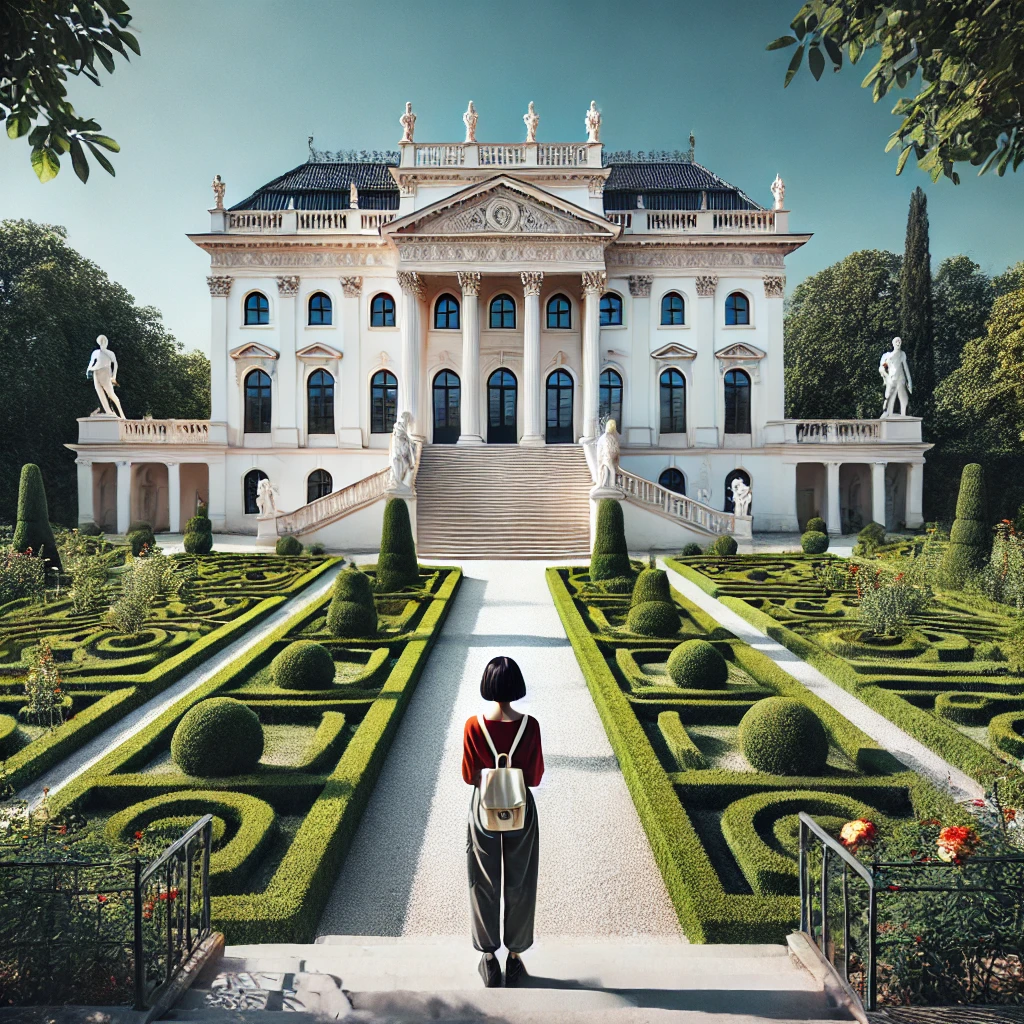ChatGPT:
Vicenza, located in the Veneto region of northern Italy, is a city renowned for its rich architectural heritage, particularly its association with the famous Renaissance architect Andrea Palladio. Palladio designed many of the city’s buildings and villas, giving Vicenza its unique classical character. The city is a UNESCO World Heritage Site, largely because of Palladio’s work, including the iconic Basilica Palladiana and the Teatro Olimpico, one of the oldest indoor theaters in the world.
Vicenza is also a hub for goldsmiths and jewelry, with a long history in the craft. Its charming historic center features elegant piazzas, winding cobbled streets, and striking palaces, such as Palazzo Chiericati. The nearby countryside is dotted with Palladian villas, such as Villa La Rotonda, a perfect example of Palladio’s neoclassical style.
In addition to its architecture, Vicenza offers a vibrant food scene, influenced by both Venetian and regional traditions. Local specialties include “baccalà alla vicentina” (salted cod) and “bigoli” (thick pasta) served with various sauces.
Set against the backdrop of the Berici Hills, Vicenza is also a gateway for nature lovers, offering scenic hiking trails and beautiful landscapes. Despite its historical importance, the city has a quiet, less touristy atmosphere compared to its Veneto neighbors, Venice and Verona.
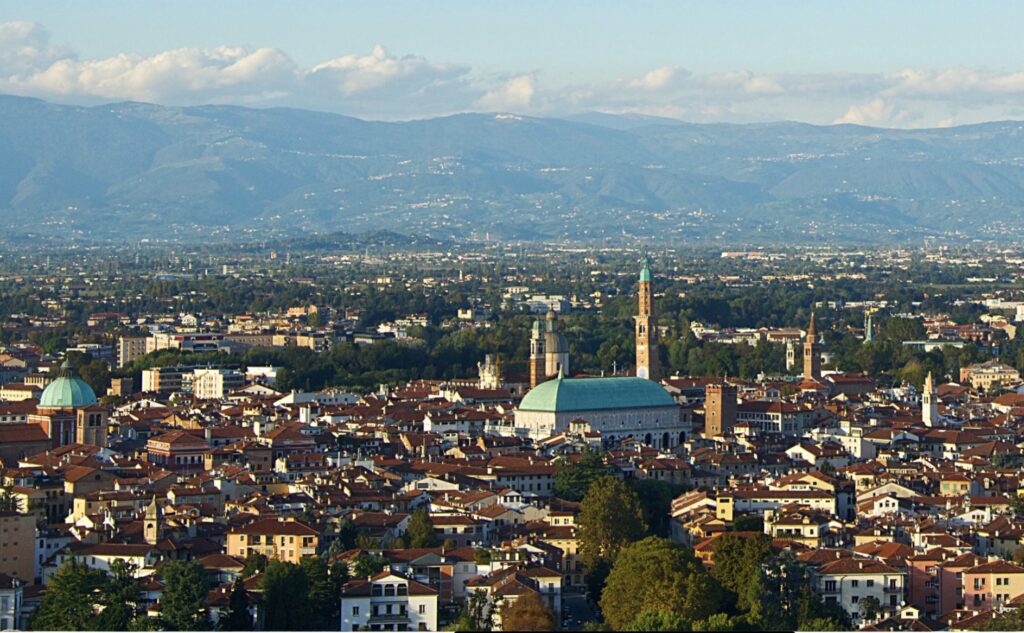
Vicenza’s origins date back to ancient times, with evidence of settlement in the area as early as the 2nd millennium BCE. The city grew significantly during the Roman period, when it was known as Vicetia. The Romans established a colony there in 157 BCE, and its strategic position along important trade routes helped it develop into a thriving settlement. Roman Vicenza boasted infrastructure typical of the era, including roads, bridges, and aqueducts, and enjoyed a period of prosperity.
Post-Roman and Medieval Periods:
After the fall of the Western Roman Empire, Vicenza underwent a turbulent period marked by invasions and control changes. During the 6th century, the Lombards, a Germanic tribe, took over the region, incorporating Vicenza into their kingdom. Following the Lombard period, Vicenza became part of the Frankish Empire under Charlemagne in the 8th century. It later joined the Holy Roman Empire and grew as a free commune in the 12th century, gaining autonomy and becoming a significant player in the northern Italian political landscape.
However, throughout the Middle Ages, Vicenza was caught in conflicts between local factions and larger regional powers, such as the Guelphs and Ghibellines (supporters of the Pope and the Holy Roman Emperor, respectively). The city became a battleground for various groups seeking control, particularly the neighboring city-states of Verona and Padua. Despite this instability, Vicenza retained its importance as a trade and artisan hub during this period.
The Venetian Era:
In 1404, Vicenza voluntarily came under the control of the Republic of Venice, marking a long period of relative peace and prosperity. Under Venetian rule, which lasted until the end of the 18th century, Vicenza experienced significant growth, particularly in the arts and architecture. It was during this time that the city’s most famous figure, Andrea Palladio, rose to prominence.
19th and 20th Centuries:
After the fall of the Republic of Venice in 1797, Vicenza was briefly controlled by Napoleon before being handed over to the Austrian Empire. It remained under Austrian control until 1866 when it was incorporated into the Kingdom of Italy following the Third Italian War of Independence. During this period, the city’s economy shifted from artisan crafts to industrial production, particularly in textiles, metalworking, and jewelry. Vicenza became known as a center for goldsmiths, a tradition that continues today.
In the 20th century, Vicenza played a notable role during both World Wars. During World War I, the city was on the frontline due to its proximity to the Austrian border. It also suffered damage during World War II from Allied bombing raids targeting its industrial facilities. However, much of the historic center survived, and the city was able to rebuild in the post-war period.
Modern Vicenza:
Today, Vicenza is a thriving city known for its blend of history, culture, and economic vitality. It remains an important center for the jewelry industry, with international exhibitions and fairs showcasing its craftsmanship. The city also retains its strong Palladian legacy, attracting visitors from around the world to admire its well-preserved architecture. In 1994, UNESCO recognized “The City of Vicenza and the Palladian Villas of the Veneto” as a World Heritage Site, highlighting the city’s significant cultural contributions.
Vicenza has successfully combined its rich history with modern development, making it a vibrant, livable city that honors its past while looking toward the future. Its architectural legacy, particularly Palladio’s work, continues to inspire architects and designers globally.
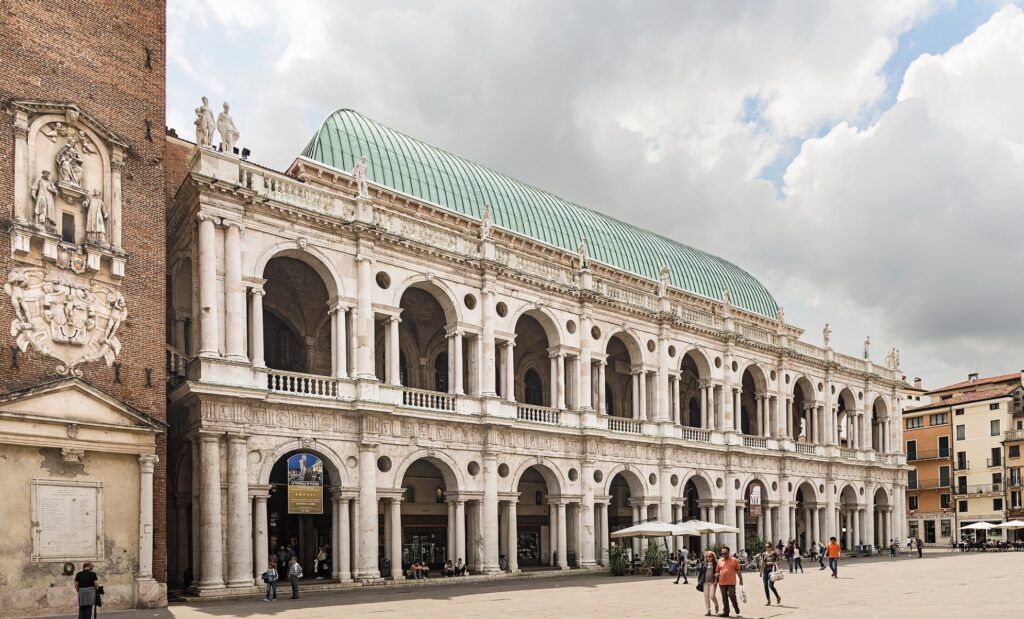
Vicenza is home to numerous historical monuments and tourist attractions, many of which are connected to the city’s rich architectural heritage, particularly its association with Andrea Palladio. Below is a list of key landmarks, including their dates:
1. Basilica Palladiana (1549–1614)
- This Renaissance building, designed by Andrea Palladio, is one of Vicenza’s most iconic landmarks. It was originally a 15th-century Gothic structure, but Palladio redesigned it with his signature classical style. The building now hosts exhibitions and cultural events.
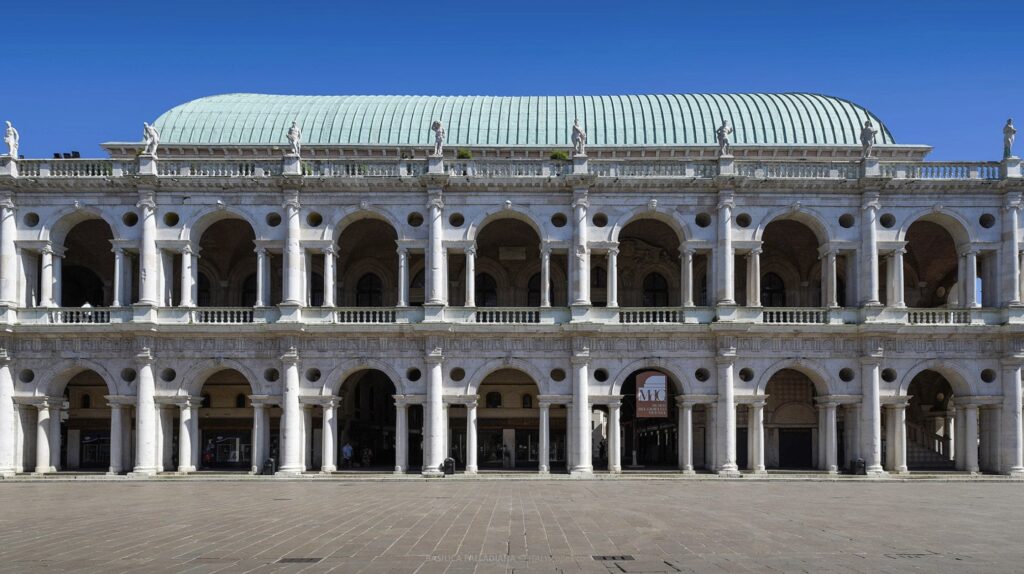
2. Teatro Olimpico (1580–1585)
- The Teatro Olimpico is one of the oldest indoor theaters in the world and was Palladio’s final work. Modeled after ancient Roman theaters, it was completed by Vincenzo Scamozzi after Palladio’s death. The wooden stage sets inside are particularly famous for their illusionistic perspective.
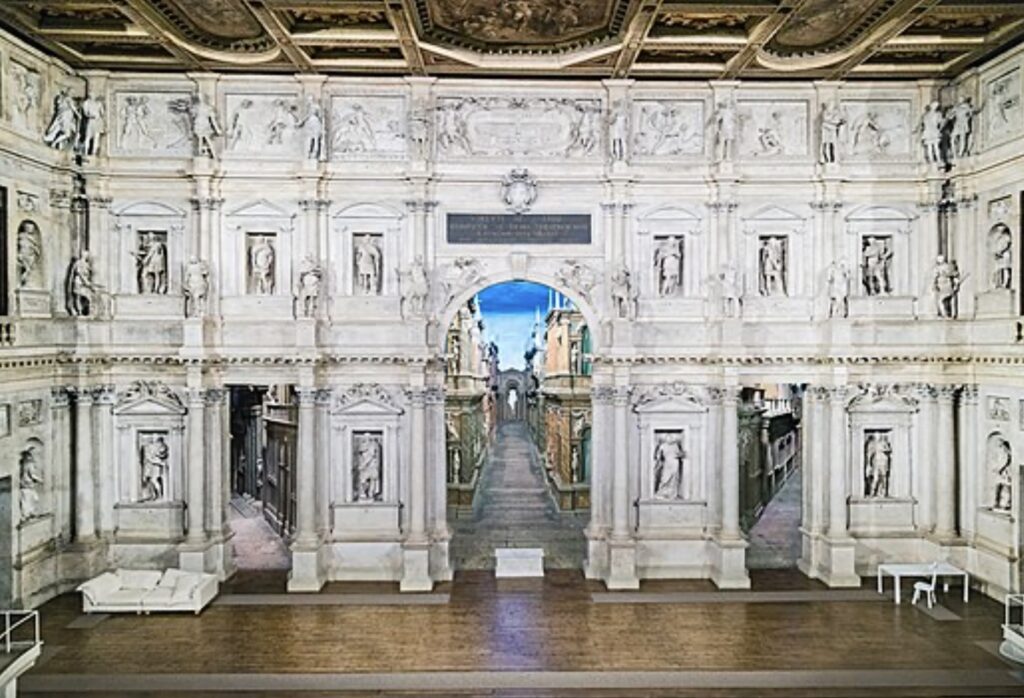
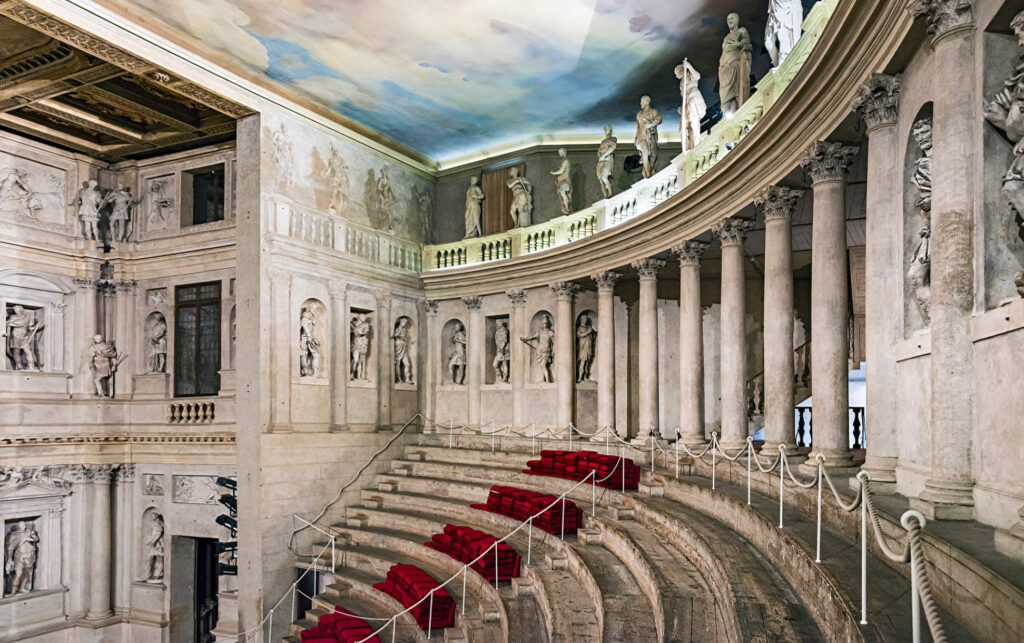
3. Villa La Rotonda (1567–1571)
- Located just outside Vicenza, Villa La Rotonda is one of Palladio’s most celebrated villas. Its symmetrical design and classical porticos were inspired by Roman temples. The villa is now a UNESCO World Heritage Site and is considered one of the most influential buildings in Western
- architecture.
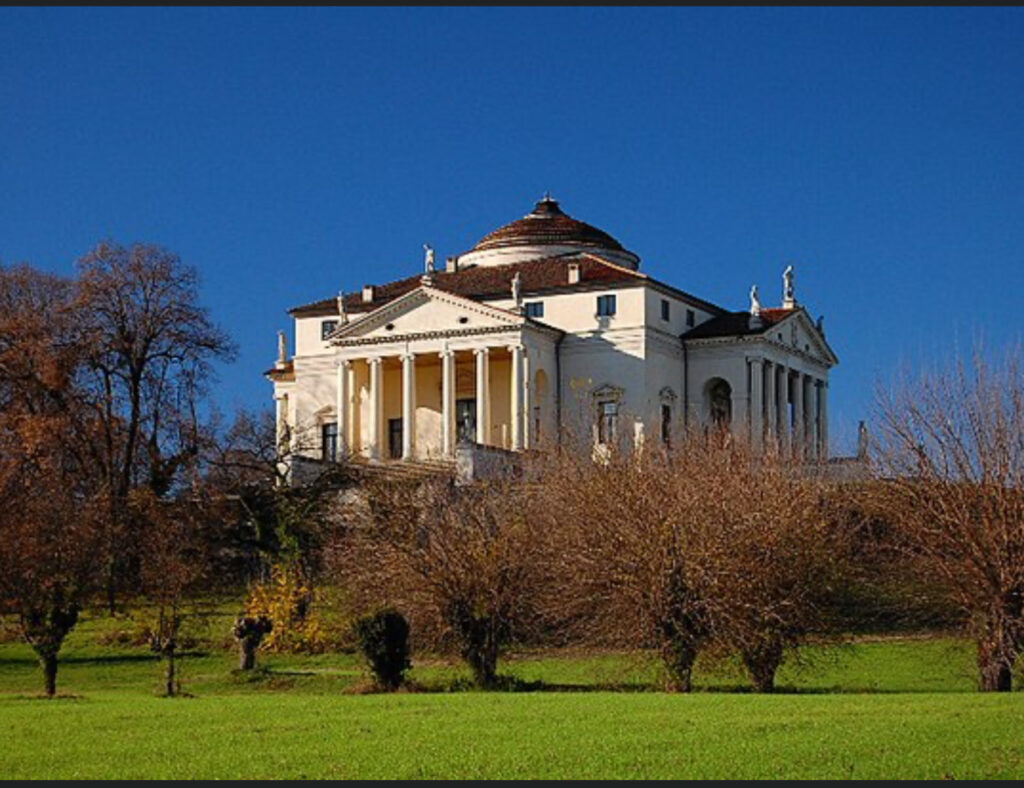
4. Palazzo Chiericati (1550–1680)
- Another Palladian masterpiece, this Renaissance palace was designed in 1550 and completed in the late 17th century. Today, it houses Vicenza’s civic art museum, with a collection of Renaissance and Baroque works.
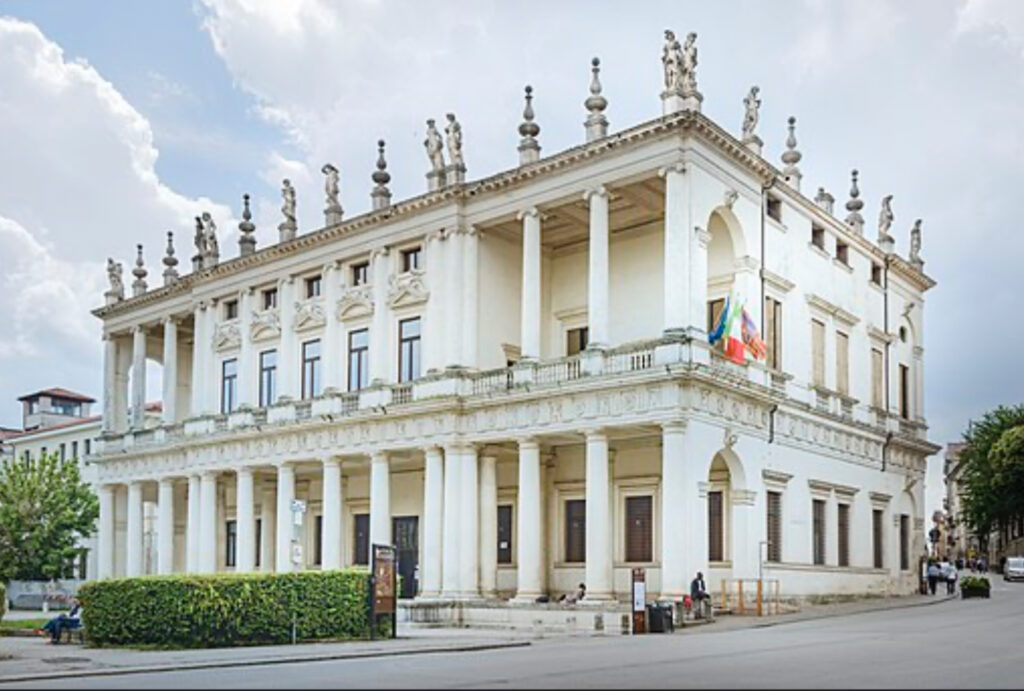
5. Palazzo Barbaran da Porto (1570–1575)
- This palazzo, also designed by Palladio, is now home to the Palladio Museum, which focuses on the architect’s life and work. The building itself is a fine example of Palladio’s urban residential designs.
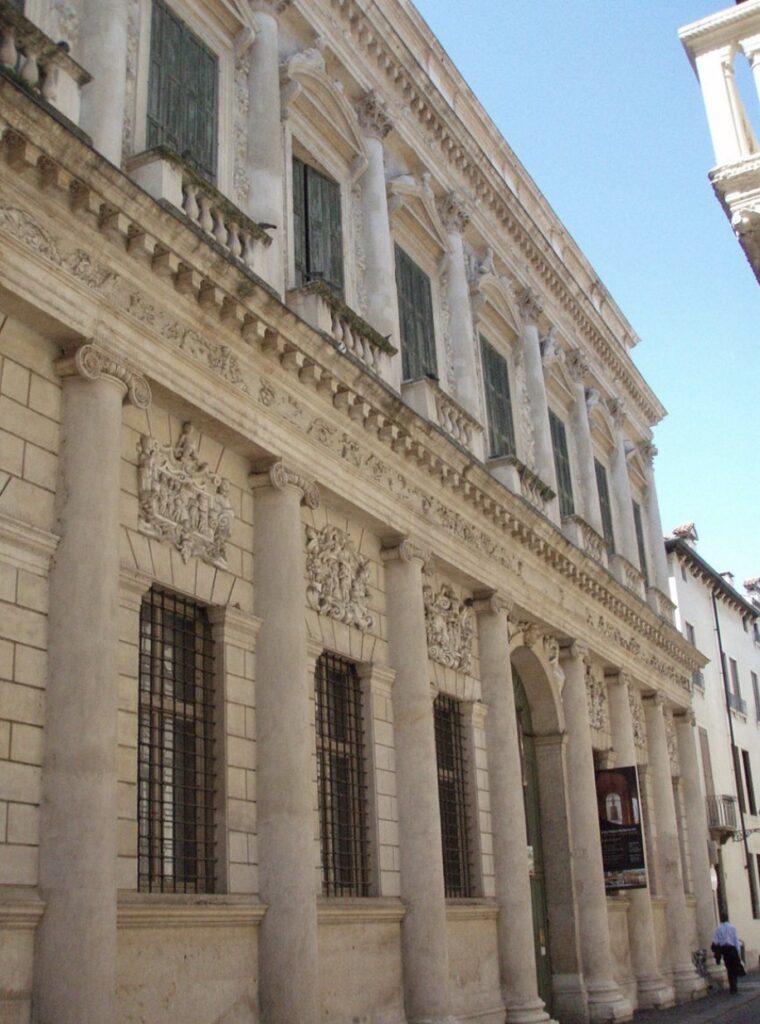
6. Loggia del Capitaniato (1571–1572)
- Another Palladio creation, this loggia was built to house the military governor of Vicenza. It is located in Piazza dei Signori, the heart of the city, and serves as a meeting hall for the city council.
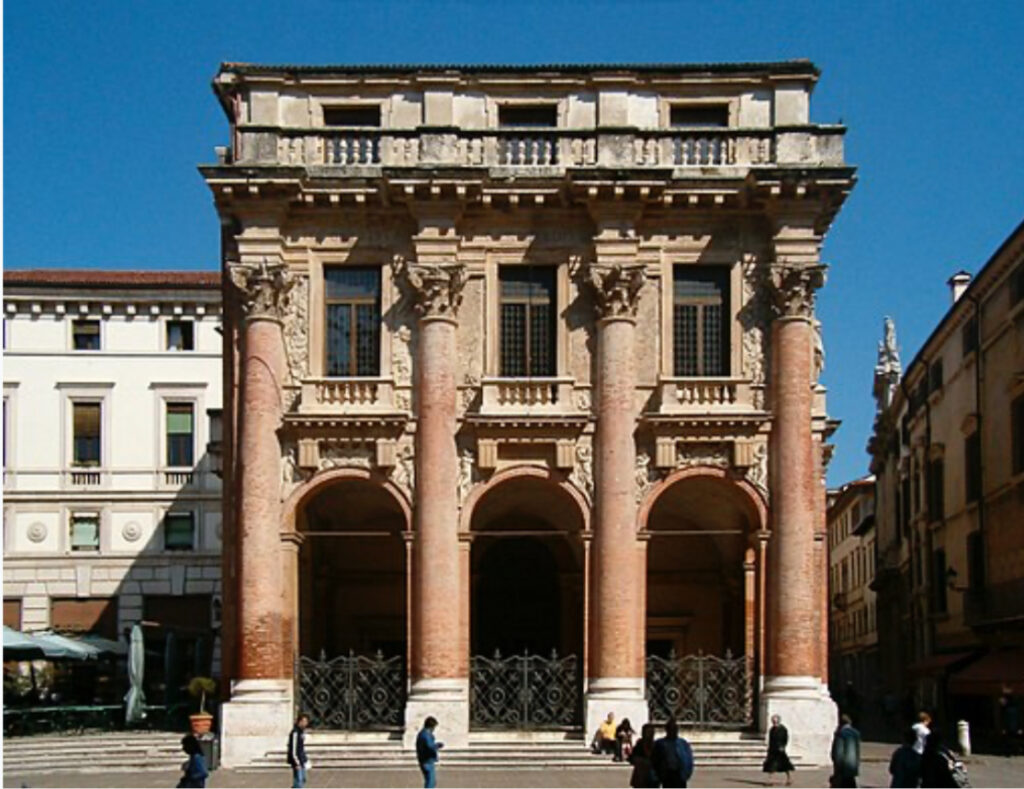
7. Piazza dei Signori
- This is Vicenza’s main square, where both the Basilica Palladiana and the Loggia del Capitaniato are located. It has been the city’s civic and social center since the Middle Ages, with several historical buildings and monuments surrounding it.
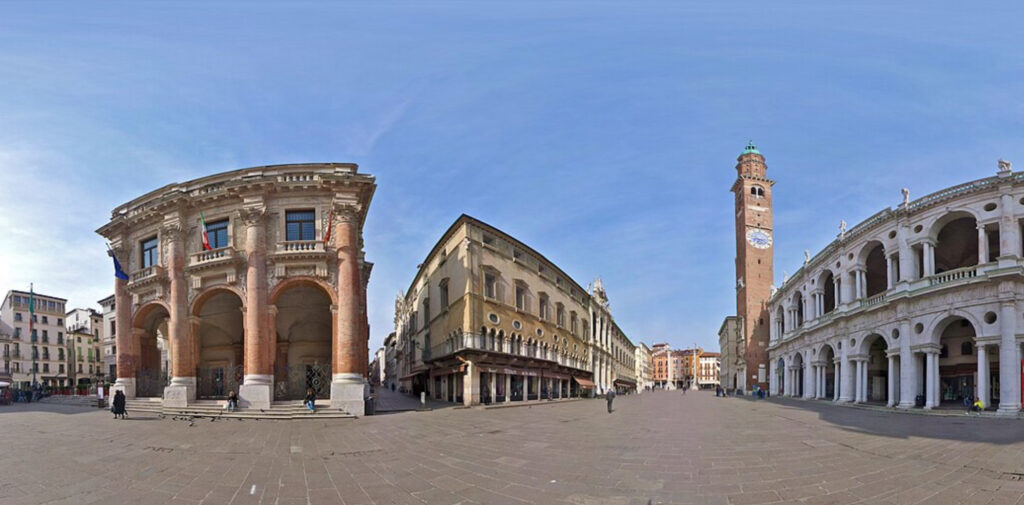
8. Villa Valmarana ai Nani (1669, frescoes added in 1757)
- This villa is famous for its frescoes by Giambattista and Giandomenico Tiepolo. The name “ai Nani” (of the dwarves) comes from the statues of dwarves that decorate the garden walls.
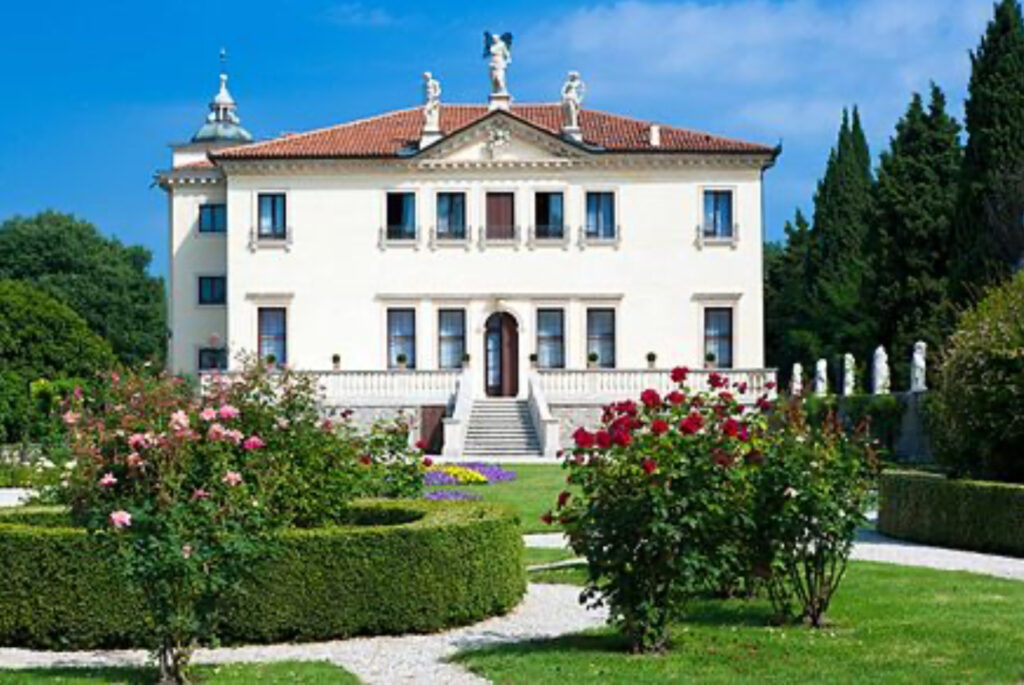
9. Duomo di Vicenza (Cathedral of Vicenza) (13th century, with earlier origins)
- The Cathedral of Vicenza is a Gothic structure, although its origins date back to earlier centuries. The current building was rebuilt after damage in World War II and features a Renaissance dome designed by Palladio.
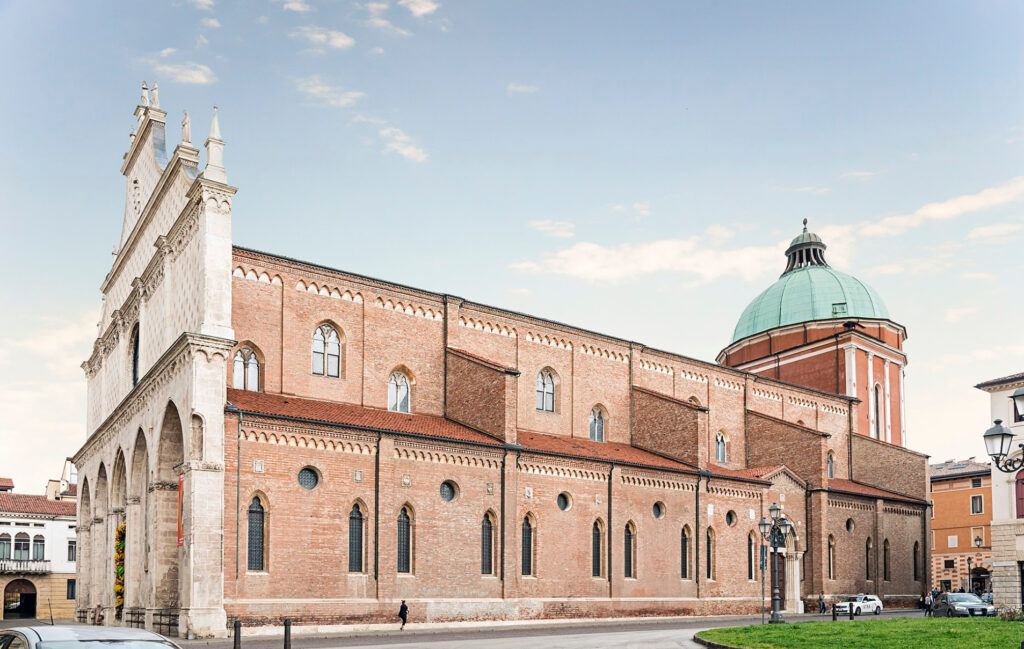
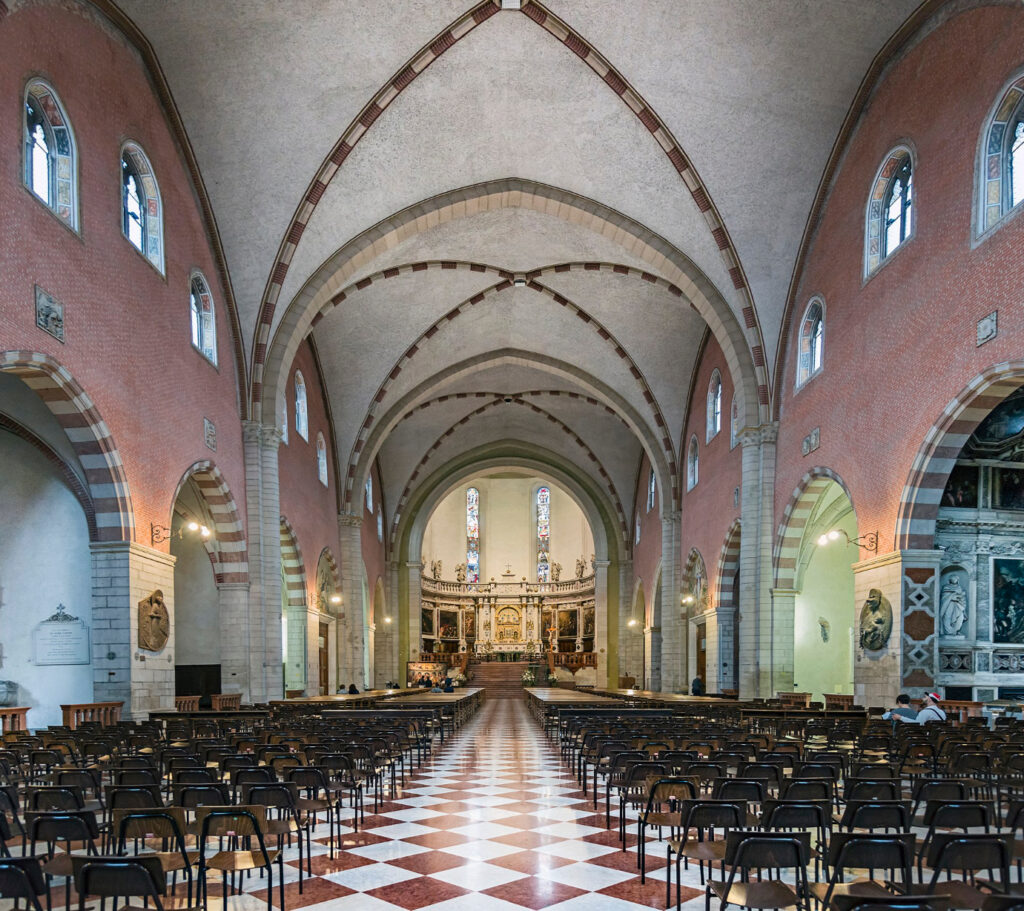
10. Chiesa di Santa Corona (13th century)
- This church was founded by the Dominicans in 1261 to house a relic of the Holy Thorn from the Crown of Thorns. It also contains important works of art, including a painting by Giovanni Bellini and a sculpture by Palladio.
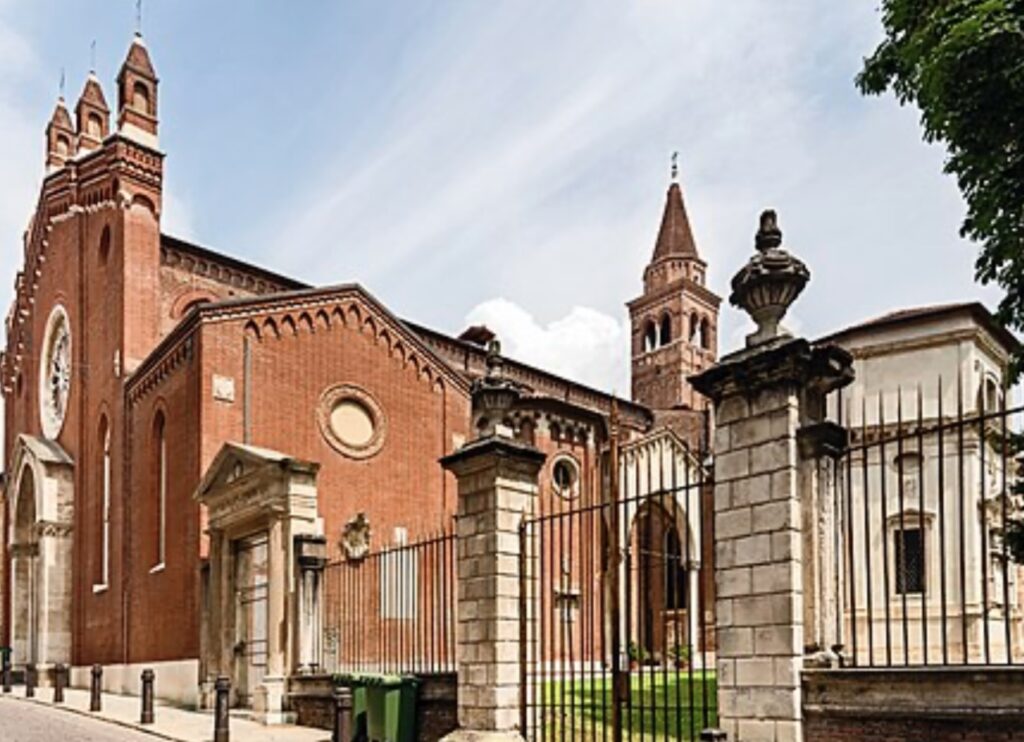
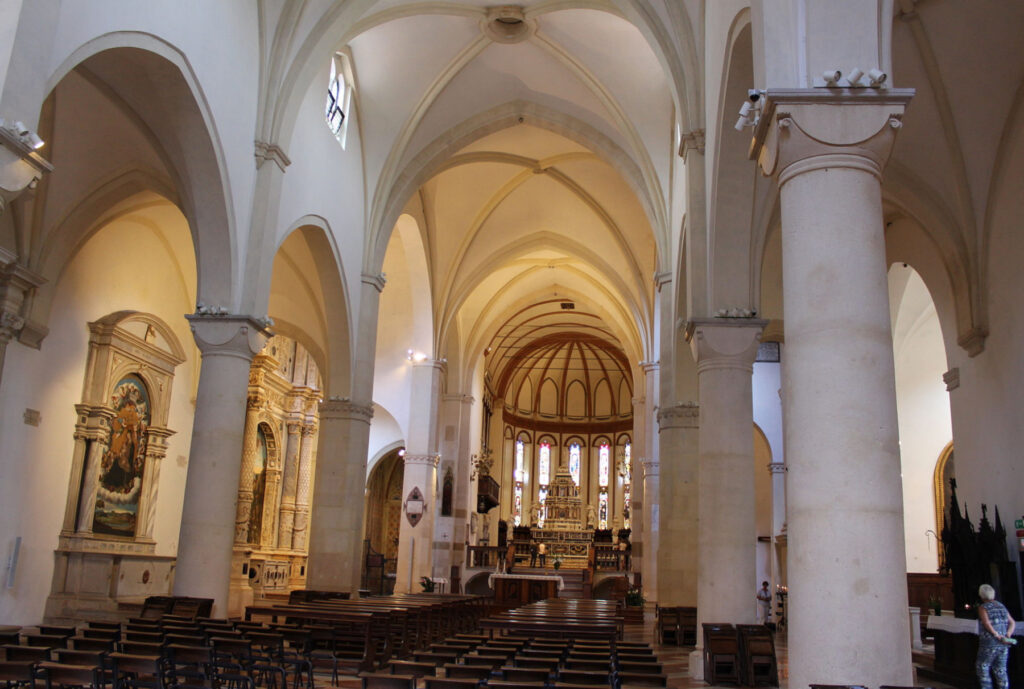
11. Torre Bissara (12th century, with later modifications)
- This tall tower, located in Piazza dei Signori, was originally built in the 12th century and later modified
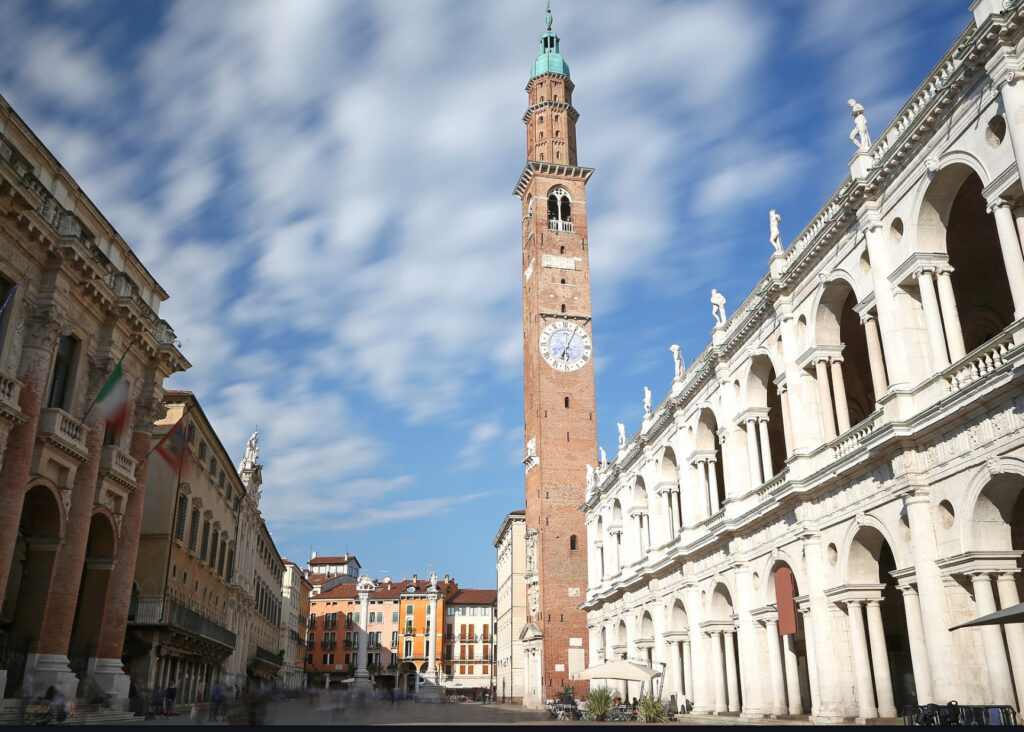
Andrea Palladio (1508–1580) was one of the most influential architects of the Renaissance, renowned for his classical designs that blended harmony, proportion, and functionality. Born in Padua and based in Vicenza, Palladio’s work was inspired by the architecture of ancient Rome, particularly as described by the Roman architect Vitruvius. His designs, characterized by the use of symmetry, classical orders, and harmonious proportions, revolutionized Western architecture.
Palladio’s special characteristics include:
- Symmetry and Balance: His buildings often feature perfectly symmetrical facades and layouts.
- Classical Elements: He incorporated columns, pediments, and porticos drawn from ancient Roman temples.
- Proportionality: He meticulously calculated the proportions of rooms and buildings to create a sense of harmony.
- Integration with Landscape: Palladio’s villas, such as Villa La Rotonda, were designed to complement their natural surroundings.
Palladio’s influence extended well beyond Italy. His architectural principles, codified in his book “I Quattro Libri dell’Architettura” (The Four Books of Architecture), profoundly shaped European and American architecture, leading to the style known as Palladianism. His work influenced notable buildings such as England’s Chiswick House and Thomas Jefferson’s Monticello in the United States.
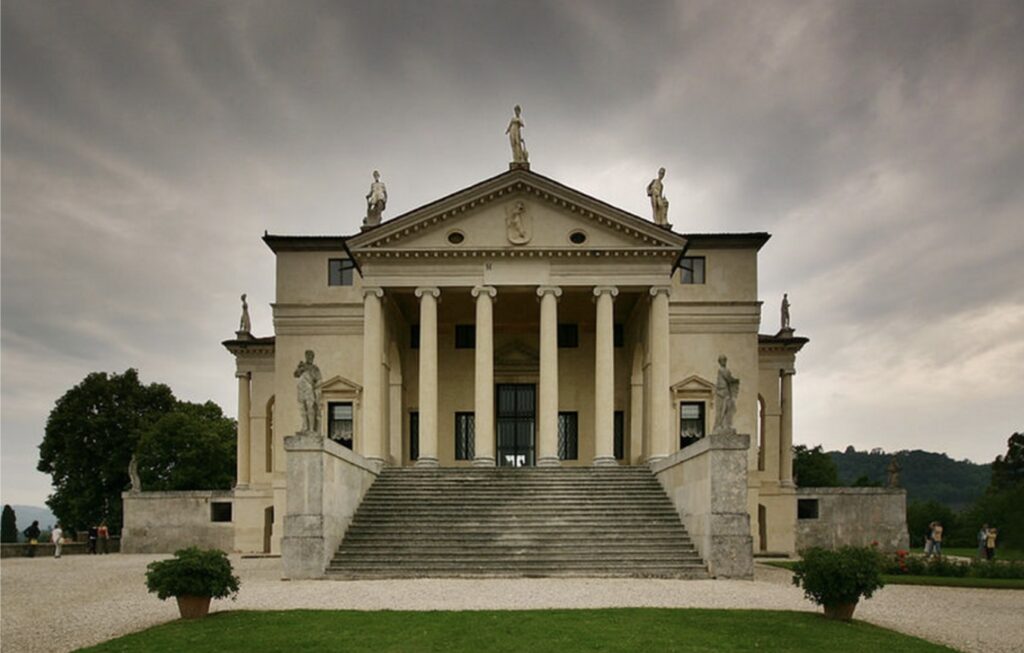
For architecture enthusiasts, a one-day itinerary in Vicenza can be an immersive journey into the world of Andrea Palladio, the city’s most famous architect, and the stunning Renaissance heritage he left behind.
Morning:
- Basilica Palladiana (9:00 AM – 10:00 AM)
- Start your day at the Basilica Palladiana, located in Piazza dei Signori. Explore its exterior, where Palladio’s classical influence is clearly visible, and visit the interior to appreciate its vast spaces and exhibitions. The terrace offers excellent views of Vicenza.
- Piazza dei Signori and Loggia del Capitaniato (10:00 AM – 10:30 AM)
- Walk around Piazza dei Signori, the city’s central square, and admire the Loggia del Capitaniato, another Palladio-designed building showcasing his architectural mastery with its detailed classical features.
- Palazzo Chiericati (10:45 AM – 11:30 AM)
- Head to the nearby Palazzo Chiericati, a Palladian masterpiece, now home to Vicenza’s civic art gallery. The building itself is a stunning example of Palladio’s residential architecture, with its grand façade and colonnades.
- Teatro Olimpico (11:45 AM – 12:30 PM)
- A short walk from Palazzo Chiericati, visit the Teatro Olimpico, Palladio’s last work and the oldest indoor theater in the world. Its classical Roman-inspired design and stunning illusionistic stage set make it a must-see for architecture enthusiasts.
Lunch:
- Lunch in the Historic Center (12:30 PM – 1:30 PM)
- Take a break at a local trattoria in the historic center, enjoying some bigoli (thick pasta) or baccalà alla vicentina, a local salted cod specialty.
Afternoon:
- Villa La Rotonda (2:00 PM – 3:30 PM)
- After lunch, take a short taxi or bus ride to Villa La Rotonda, Palladio’s most iconic villa just outside Vicenza. Marvel at its symmetrical design and classical temple-like features. You can explore both the exterior and, depending on availability, the interior.
- Villa Valmarana ai Nani (3:45 PM – 4:30 PM)
- Nearby, visit Villa Valmarana ai Nani, another impressive villa known for its frescoes by Giambattista and Giandomenico Tiepolo. The villa’s gardens and its unique statues of dwarfs provide an additional architectural and artistic layer to your visit.
Late Afternoon:
- Palazzo Barbaran da Porto and Palladio Museum (5:00 PM – 6:00 PM)
- End your day at Palazzo Barbaran da Porto, home to the Palladio Museum, where you can dive deeper into Palladio’s life and work. The museum showcases his architectural innovations and provides context for the buildings you’ve seen throughout the day.
Evening:
- Dinner in Vicenza (6:30 PM onwards)
- Conclude your day with dinner at one of Vicenza’s historic restaurants, savoring local cuisine and reflecting on the architectural wonders you’ve experienced.
This itinerary offers a comprehensive tour of Palladio’s most famous works in Vicenza, with plenty of time to explore and appreciate the details of each architectural marvel.
